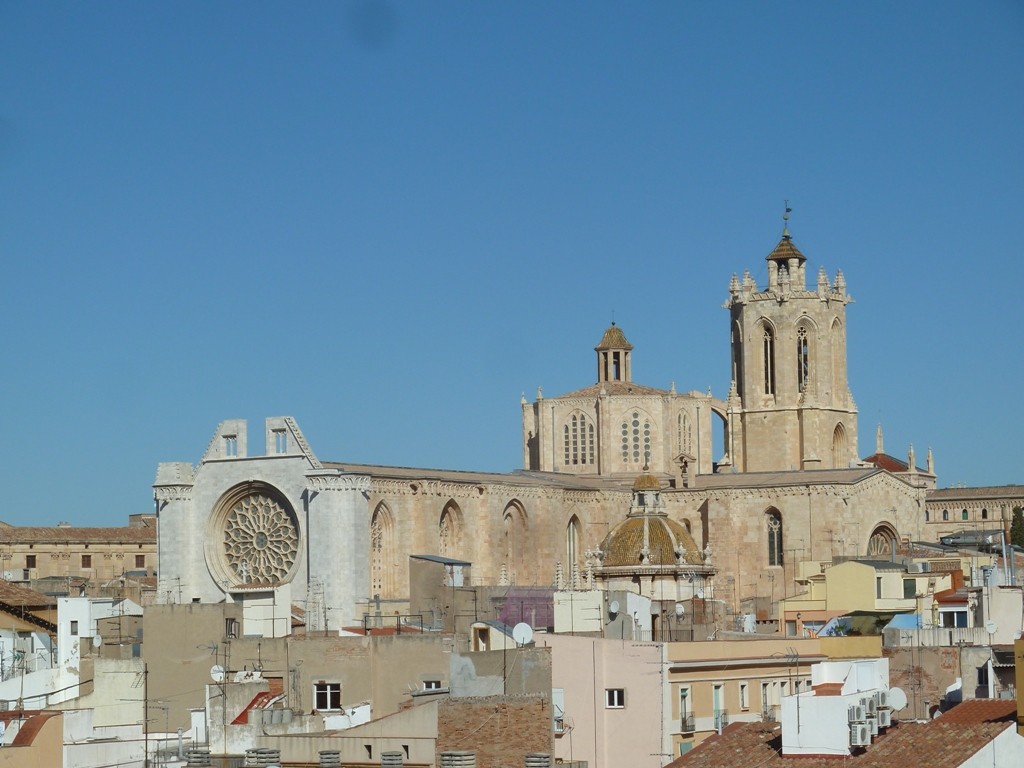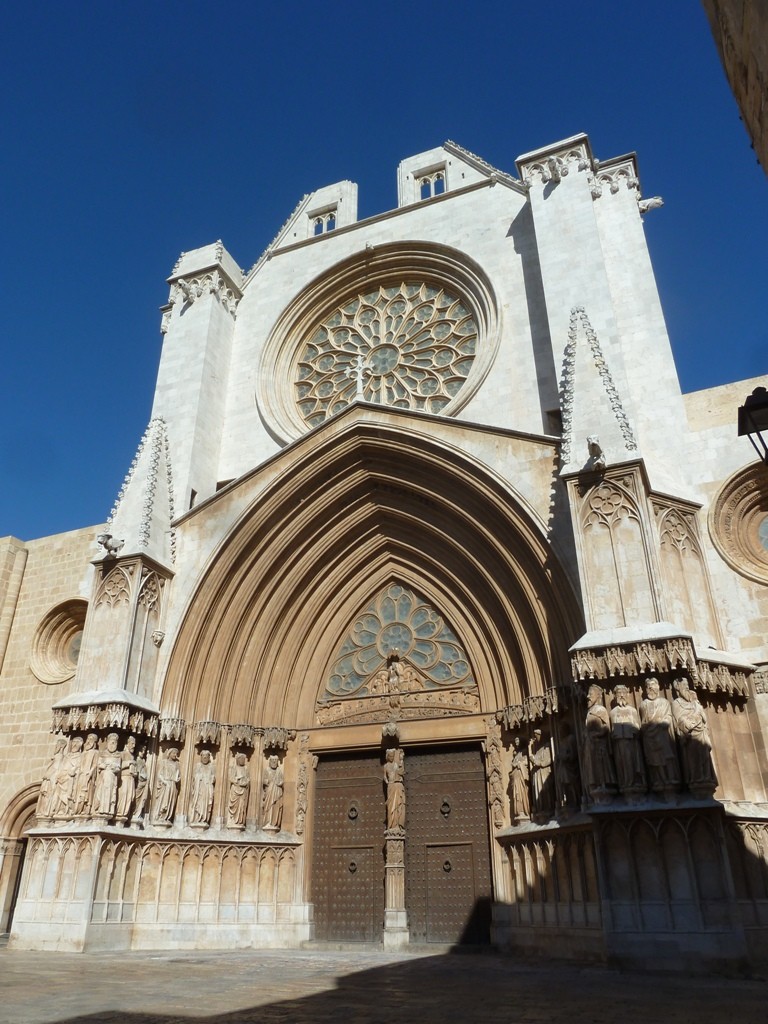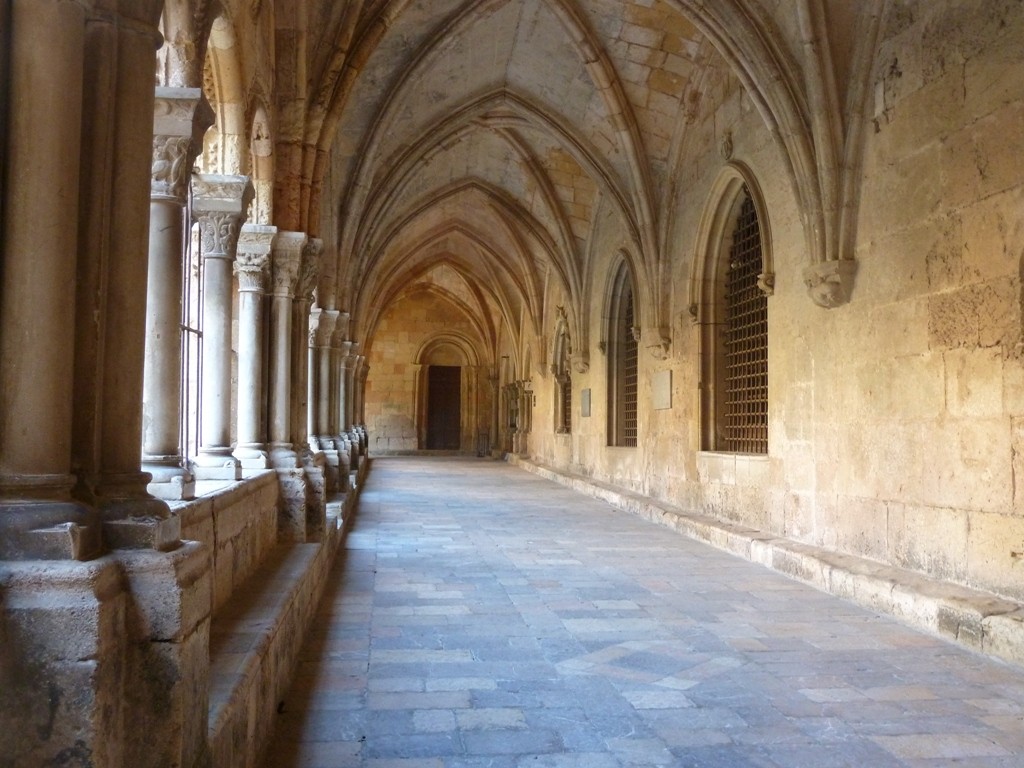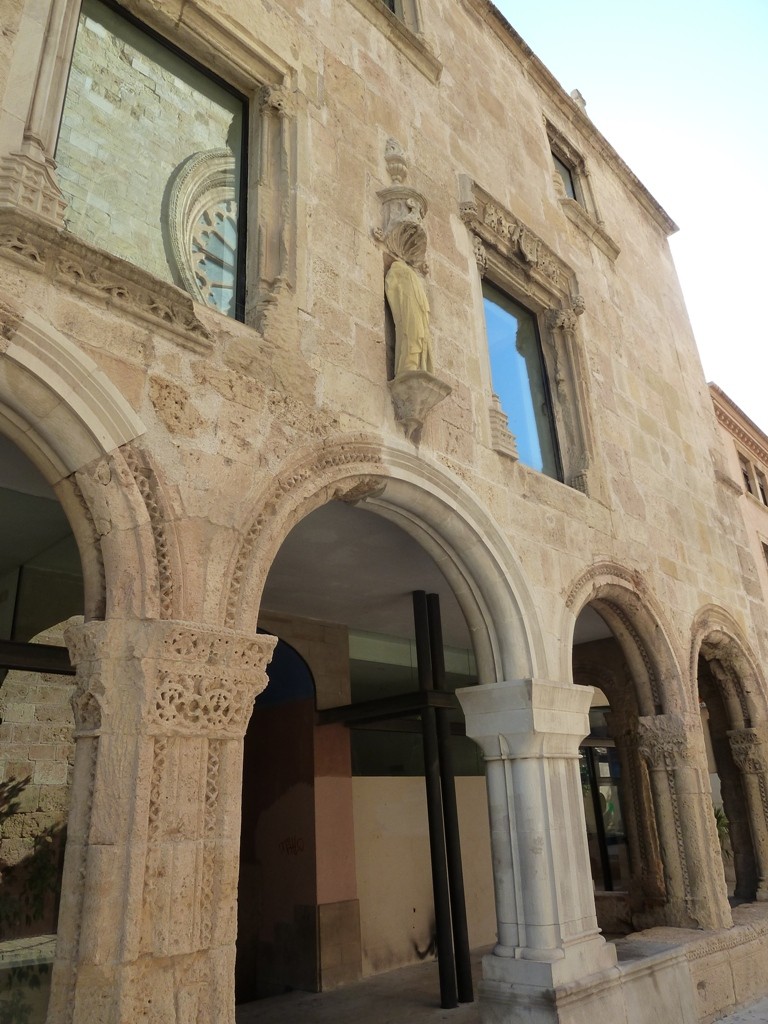About the several Roman beauties which you can admire in Tarragona, I have already written a couple of times. Anyway, it is important to say that the cultural heritage of the city consists not only in the ancient and impressive ruins, but also in the medieval urban fabric found in the city centre. As a matter of fact, the two historic souls of the city are not far and separated one from each other, but rather coexisting in mutual enhancement. A visit to the centre, therefore, is the normal prosecution of the archeological tour which I have already described.

The Cathedral is doubtlessly the juiciest part of the centre. Located right at the top of the hill, and towering therefore over the other buildings, it has recently undergone massive works, which contributed to restore its former glory. Nowadays, indeed, it is possible to admire in all its splendour this gem of the so-called "Transition style". The curious structure of the main facade, indeed, bear the marks of the Romanesque style, while the Gothic influence is clearly seen in the arches and the bell tower. Not by chance, the long building period (it took more than 150 years, from 1171 to 1332 to finish it) coincided with the decline of the Romanesque and the rise of the Gothic style. Another striking aspect in the structure of the church is the robustness of his design, resembling that of a fortress. A fact that should not be surprising, taking into account that the Moors were a continuous threaten for the city, which they had invaded in 714.

The 4 euro entrance fee is really worth paying, not only to see the inner part of the church, but also (and, perhaps, mainly) to visit the superb cloister. The cathedral houses the relics of Santa Tecla, the saint patron of the city to whom the church itself is devoted. Other features of interest are the spectacular domes, a 15th century altarpiece and the chapels. Right next to one of the left-nave chapels, a side door will lead you to the enchanting atmosphere of the cloister, created by the combination of the lush and well-groomed garden with the surrounding architectural elements. Besides the fine perspective offered by the coloured flowers, the most significant feature of the rectangular cloister are the precious decorations of the capitals, a remarkable example of Romanesque sculpture. If you are still willing to see something before moving on, on your way out you will find the Museu Diocesà, though I admit was not among its visitors.

After all, there is no need to go much further to find another interesting medieval landmark. Right next to the Cathedral, on its eastern side, is indeed located the Hospital de Sant Pau i Santa Tecla, the most ancient hospital of Tarragona. It dates back to 1171, though all we have left of the original building is the facade, consisting in a portico and five round arches. Once again, the decorations of the capitals are the most interesting features, while the upper floors were probably added in the 15th century. The building now houses the local county administration.

